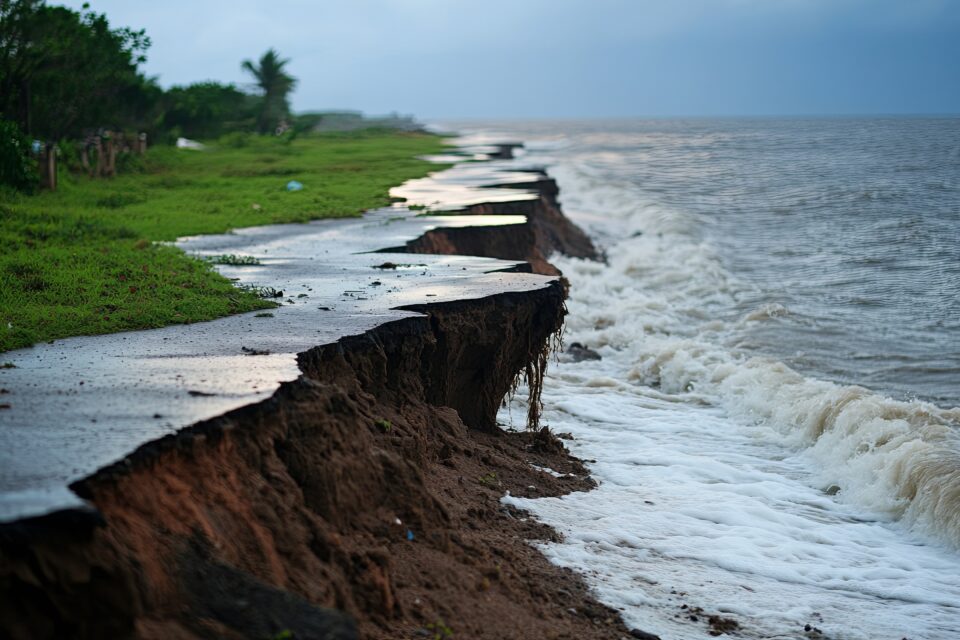Coastal erosion poses a complex challenge for local authorities, and tackling the issue calls for a multifaceted approach, including enhanced monitoring, inventory-taking, robust asset management programmes, and better data use, explains Sam Morgan, the Technical Principal in Coastal Adaptation at WSP.
Drive around parts of the country and it’s not unusual to spot old coastal protection structures. These can take various forms, from more traditional rock revetments to car chassis and shipping containers.
Many are decades old and often in quite a parlous state as maintenance and asset management programs have not been applied to them. All it will take is for a large storm to barrel through and hit them at just the right angle for a critical section, or sections, of road to blow out – resulting in a months-long, or potentially years-long, disruption.
Our country has been dealing with coastal erosion issues for decades and often in an ad-hoc manner. With the physical impacts of climate change now hitting their straps, the proverbial chickens are coming home to roost.
Recent research from the University of Auckland reveals a mixed picture of our coastlines. It shows areas where the shore is expanding and others where erosion is problematic. However, predicting the exact nature of future erosion remains uncertain.
Historical data is crucial for understanding coastal erosion, but data is often sporadic and only captures broad trends. This can be an issue when used in predictive models because they may not fully account for the evolving and smaller-scale dynamics of coastal systems over recent decades.
For instance, we know that weather patterns such as El Nino and La Nina influence wave climates and periods of beach erosion or accretion at different beaches.
New studies indicate that we can expect future changes in wave patterns, but we are still unsure how aspects such as shifts in wave direction might impact wider sediment transport mechanisms, potentially creating new or compounding existing erosion issues.
The uncertainty is further complicated by the limitations of shoreline projection methods, which often rely on historical imagery and often do not consider the full range of dynamic processes at a site. For example, estimating shoreline positions based on aerial images may miss important factors like the presence and condition of seawalls or can be obscured by vegetation, leading to potential inconsistencies.
Managing coastal erosion effectively requires proactive planning and monitoring. Although government guidelines suggest using environmental triggers to guide adaptation and retreat strategies, there’s a significant gap in implementing thorough monitoring systems. For example, at St Clair in Dunedin, which has faced coastal erosion issues for over a century, monitoring efforts have only recently been enhanced.
The absence of robust historical data and effective monitoring can hamper decision-making. Recent high-profile issues in Port Waikato and Whitianga illustrate the need for better planning and earlier intervention to handle coastal risks more effectively. In these cases, better linkages of monitoring data to management regimes may have resulted in different outcomes.
Regional authorities face challenges due to the inherent uncertainty and variability of erosion projections. Risk assessments often rely on broad data sets that might not accurately reflect the conditions of specific sites. For instance, the presence and condition of protective structures like seawalls may not be well-documented, leading to possible mis-judgments in risk evaluations.
Greater consistency in risk assessments and adaptation strategies is essential for fair outcomes. Improvement in the standardisation of how erosion risks are assessed and managed is required, with the aim of improving the application of adaptation measures and protection structures.
Another step in starting to put things right, aside from monitoring, is having an inventory and understanding which of your assets and infrastructure are sited on the coast and potentially at risk from coastal climate impacts.
When it comes to managing your assets, building resilience into your asset management programme is a practical and pragmatic way forward. Programming upgrade decisions ahead of time will be far more effective than waiting until the next big storm event when, chances are, there’ll be an overwhelming amount of repair work to have to deal with.
When an asset comes up for renewal, for example, you can decide whether it’s a candidate for upgrading; perhaps more shoreline protection structures are needed on certain stretches of your coast; perhaps retreat is a better option, where some of your assets and infrastructure need to be moved from the most vulnerable stretches of coast.
It’s crucial to develop consistent and fair strategies for managing risks and implementing coastal management measures. By proactively monitoring and planning, including building resilience into asset management programmes, communities can better prepare for and mitigate the effects of coastal erosion.
Doing so has never been more important in safeguarding our coastal environments and ensuring sustainable development for future generations.


